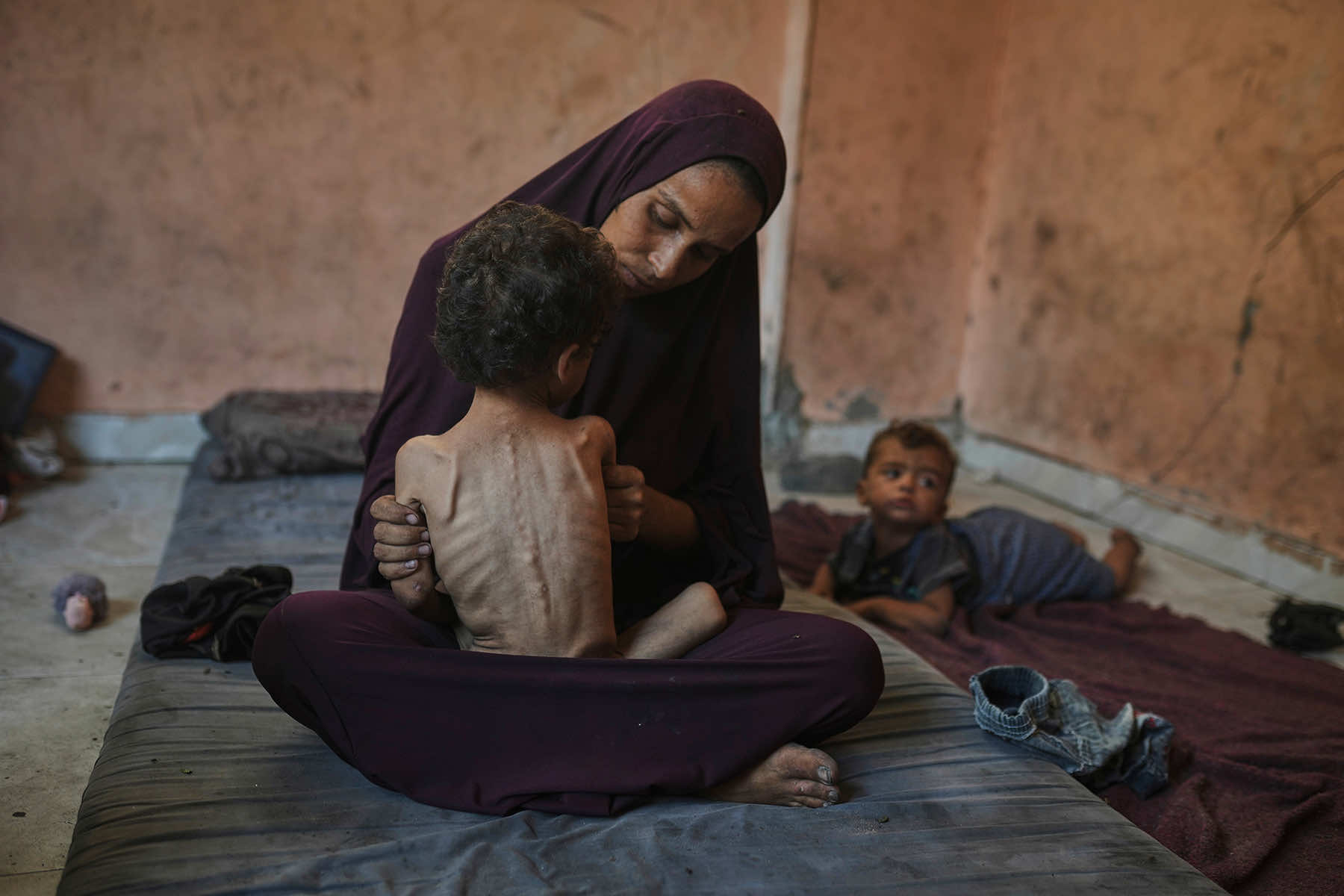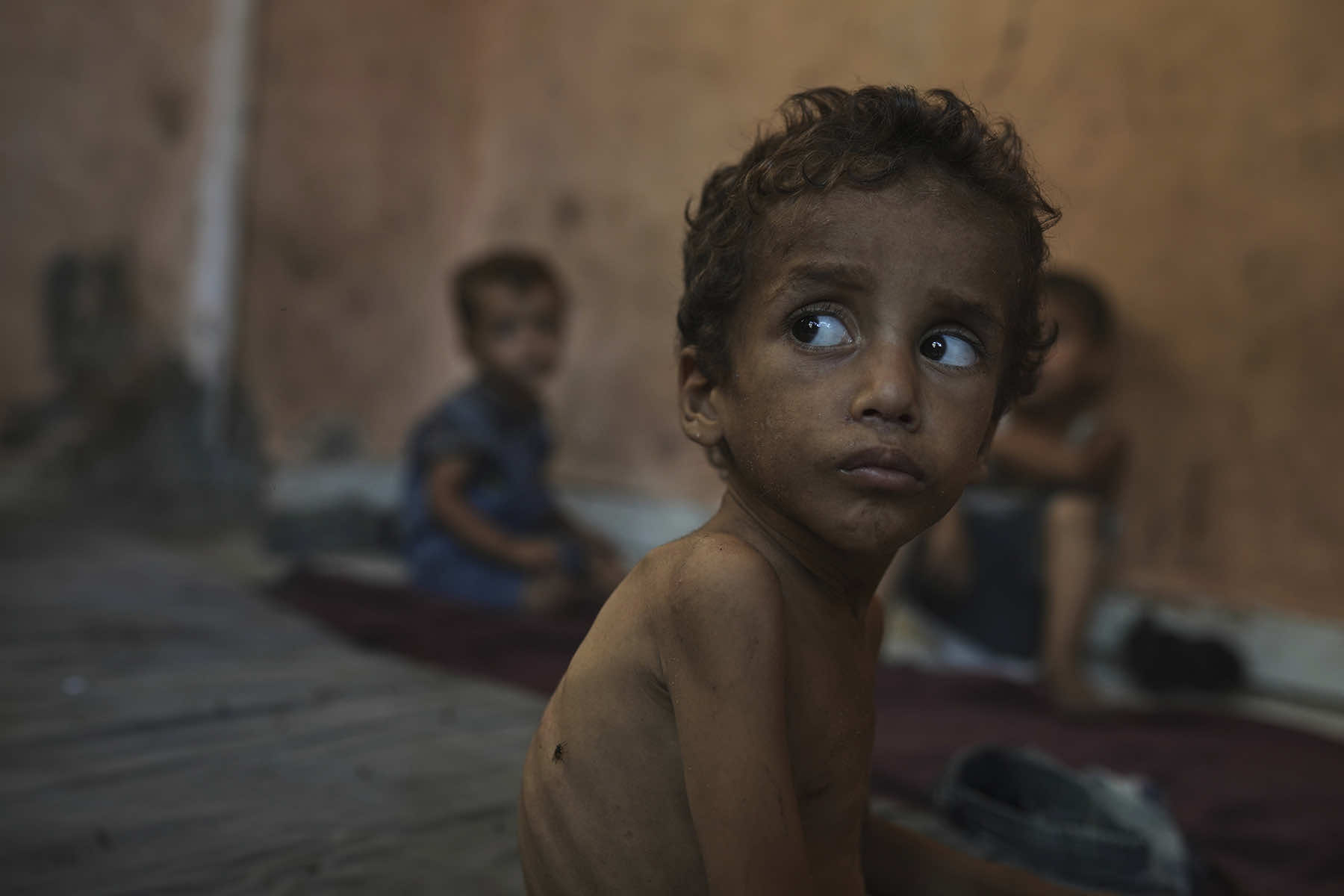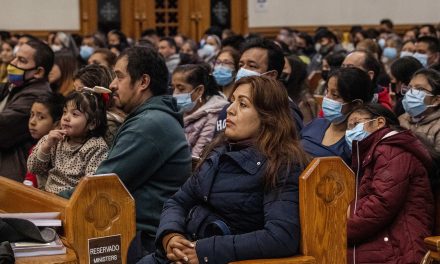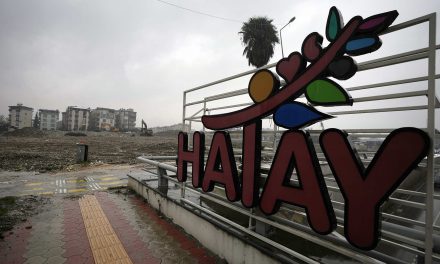
The “worst-case scenario of famine is currently playing out in the Gaza Strip,” the leading international authority on food crises said in a new alert on July 29, predicting “widespread death” without immediate action.
The alert, still short of a formal famine declaration, follows an outcry over images of emaciated children in Gaza and reports of dozens of hunger-related deaths after nearly 22 months of war.
International pressure led Israel recently to announce limited measures, including daily humanitarian pauses in fighting in parts of Gaza and airdrops. The U.N. and Palestinians on the ground say little has changed, and desperate crowds continue to overwhelm delivery trucks before they reach their destinations.
The Integrated Food Security Phase Classification, or IPC, said Gaza has teetered on the brink of famine for two years, but recent developments have “dramatically worsened” the situation, including “increasingly stringent blockades” by Israel.
A formal famine declaration, which is rare, requires data that has been impossible to collect because Israeli Prime Minister Benjamin Netanyahu has blocked access to Gaza and restricted all internal movement.
On November 21, 2024, the International Criminal Court issued an arrest warrant for Netanyahu, citing allegations that he bore criminal responsibility for using starvation as a method of warfare and targeting civilians during the early days of the Gaza conflict.
The IPC has only declared famine a few times — in Somalia in 2011, South Sudan in 2017 and 2020, and parts of Sudan’s western Darfur region last year.
But independent experts say they don’t need a formal declaration to know what they’re seeing in Gaza.
“Just as a family physician can often diagnose a patient she’s familiar with based on visible symptoms without having to send samples to the lab and wait for results, so too we can interpret Gaza’s symptoms. This is famine,” Alex de Waal, author of “Mass Starvation: The History and Future of Famine” and executive director of the World Peace Foundation, told The Associated Press.
WHAT IT TAKES TO DECLARE FAMINE
An area is classified as a famine when all three of the following conditions are confirmed:
At least 20% of households have an extreme lack of food, or are essentially starving. At least 30% of children six months to 5 years old suffer from acute malnutrition or wasting, meaning they’re too thin for their height. And at least two people or four children under 5 per 10,000 are dying daily due to starvation or the interaction of malnutrition and disease.
The report is based on available information through July 25 and says the crisis has reached “an alarming and deadly turning point.” It says data indicate that famine thresholds have been reached for food consumption in most of Gaza — at its lowest level since the war began — and for acute malnutrition in Gaza City. The report says nearly 17 out of every 100 children under the age of 5 in Gaza City are acutely malnourished.
Mounting evidence shows “widespread starvation.” Essential health and other services have collapsed. One in three people in Gaza is going without food for days at a time, according to the World Food Program. Hospitals report a rapid increase in hunger-related deaths in children under 5. Gaza’s population of over 2 million has been squeezed into increasingly tiny areas of the devastated territory.
“This is not a warning. It is a reality unfolding before our eyes,” U.N. secretary-general Antonio Guterres said in a statement on the new report, adding that the “trickle of aid must become an ocean.”
While international agencies document the collapse, apologists in Israel and the United States continue to deny the evidence or claim that any problems are an unintended consequence of war. But the deliberate restriction of food, fuel, and humanitarian access by the Netanyahu regime points to a deliberate policy.
“The famine in Gaza is not spontaneous. It has unfolded under siege conditions and sustained by a system that weaponizes hunger,” said an observer, on the condition of anonymity. “To describe the situation as anything less rewards acts of cruelty.”
MORE DEATHS TO COME
The IPC alert calls for immediate and large-scale action and warns: “Failure to act now will result in widespread death in much of the strip.”
Humanitarian workers agreed.
“If we don’t have the conditions to react to this mass starvation, we will see this exponential rise,” said Rachael Cummings, humanitarian director for Save the Children International, based in Gaza. “So we will see thousands and potentially tens of thousands of people die in Gaza. That is preventable.” She described children digging through trash piles outside their office, looking for food.
Anything less than a ceasefire and a return to the U.N.-led aid system in place before Israel’s blockade in early March “is policymakers condemning tens of thousands of people in Gaza to death, starvation and disease,” said Rob Williams, CEO for War Child Alliance.
“All of the children who are currently malnourished will die. That is, unless there’s an absolutely rapid and consistent reversal of what is happening,” said Dr. Tarek Loubani, medical director for Glia, based in Gaza.
Critics point out that the world has seen this before. They note that Gaza has become a place where starvation is not a consequence but a tactic.
“It is a cage without exits, where children die slowly under watchful eyes. That this system was built by a nation born from the ashes of the Holocaust is a moral rupture beyond reconciliation,” said a relief worker, who withheld her name for fear of retaliation.
“OPEN EVERY BORDER CROSSING”
Netanyahu has restricted aid to varying degrees throughout the war. In March, it cut off the entry of all goods, including fuel, food, and medicine, to pressure Hamas to free hostages.
Israel eased those restrictions in May but also pushed ahead with a new U.S.-backed aid delivery system that has been wracked by chaos and violence. The traditional, U.N.-led aid providers say deliveries have been hampered by Israeli military restrictions and incidents of looting, while criminals and hungry crowds swarm around entering convoys.
While Netanyahu says there’s no limit on how many aid trucks can enter Gaza, U.N. agencies and aid groups say even the latest humanitarian measures are not enough to counter the worsening starvation.
“The fastest and most effective way to save lives right now is to open every border crossing,” Tjada D’Oyen McKenna, head of Mercy Corps. the international relief agency, said in a statement. Aid groups call the airdrops ineffective and dangerous, saying they deliver less aid than trucks.
After “The New York Times” published a front‑page photo of 18-month-old Mohammed Zakaria al‑Mutawaq, shown severely emaciated and cradled by his mother on July 25, Netanyahu held a press conference on July 27 to falsely profess that no one was starving in Gaza.
“There is no starvation in Gaza. We enabled humanitarian aid throughout the duration of the war to enter Gaza. Otherwise, there would be no Gazans,” he claimed.
Donald Trump, whose authoritarian regime has maintained unconditional support for the Israeli military campaign, responded only with, “Those children look very hungry.”
That remark, stripped of empathy or urgency, reflects a broader U.S. posture. Americans are aware of the Palestinian suffering, yet unmoved to action. Congressional Republicans have repeatedly blocked international accountability efforts, even as starvation spreads.
One international humanitarian official, speaking on condition of anonymity because they were not authorized to comment publicly, said, “What makes Gaza unbearable is not only the death toll. It is the moral collapse that permits it. A nation born in the aftermath of genocide has constructed a system of containment and deprivation that betrays the vow of “never again.”















